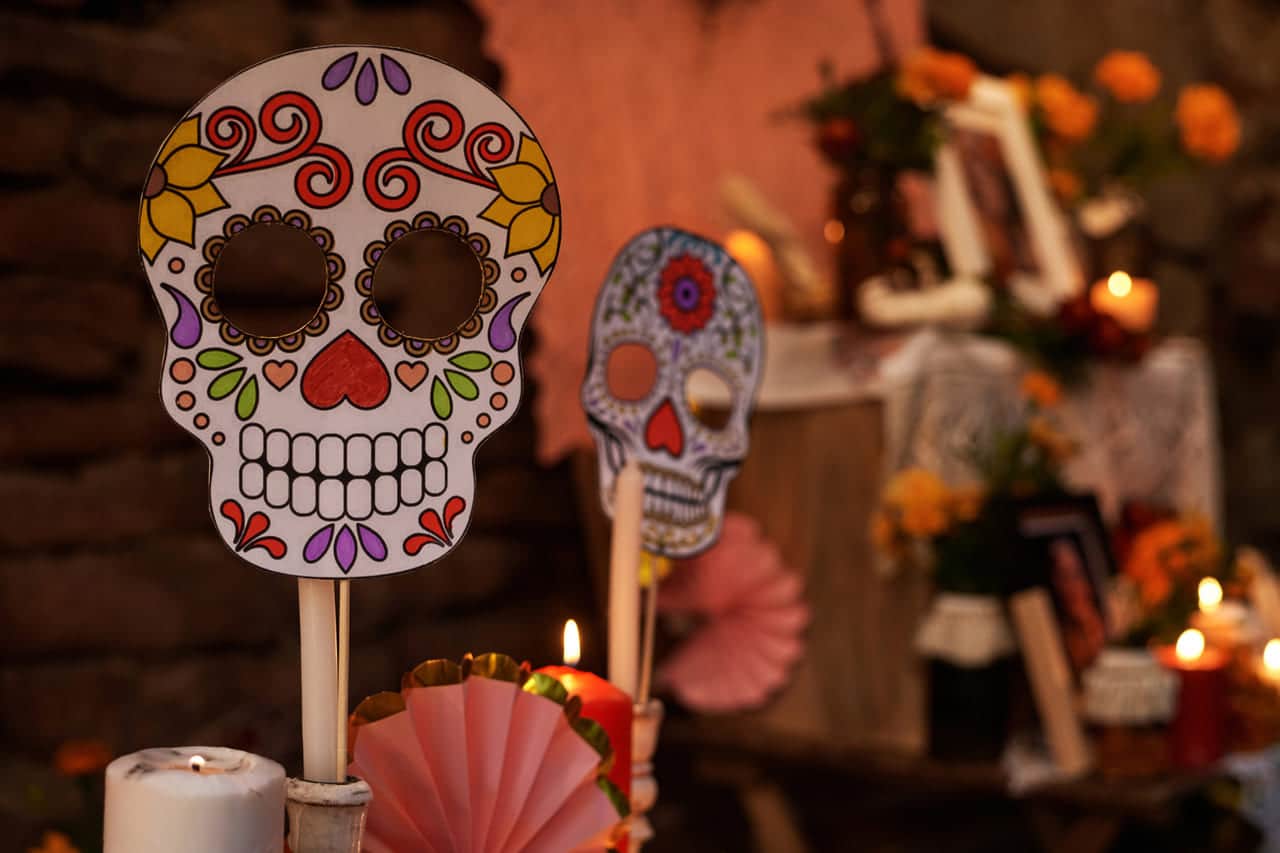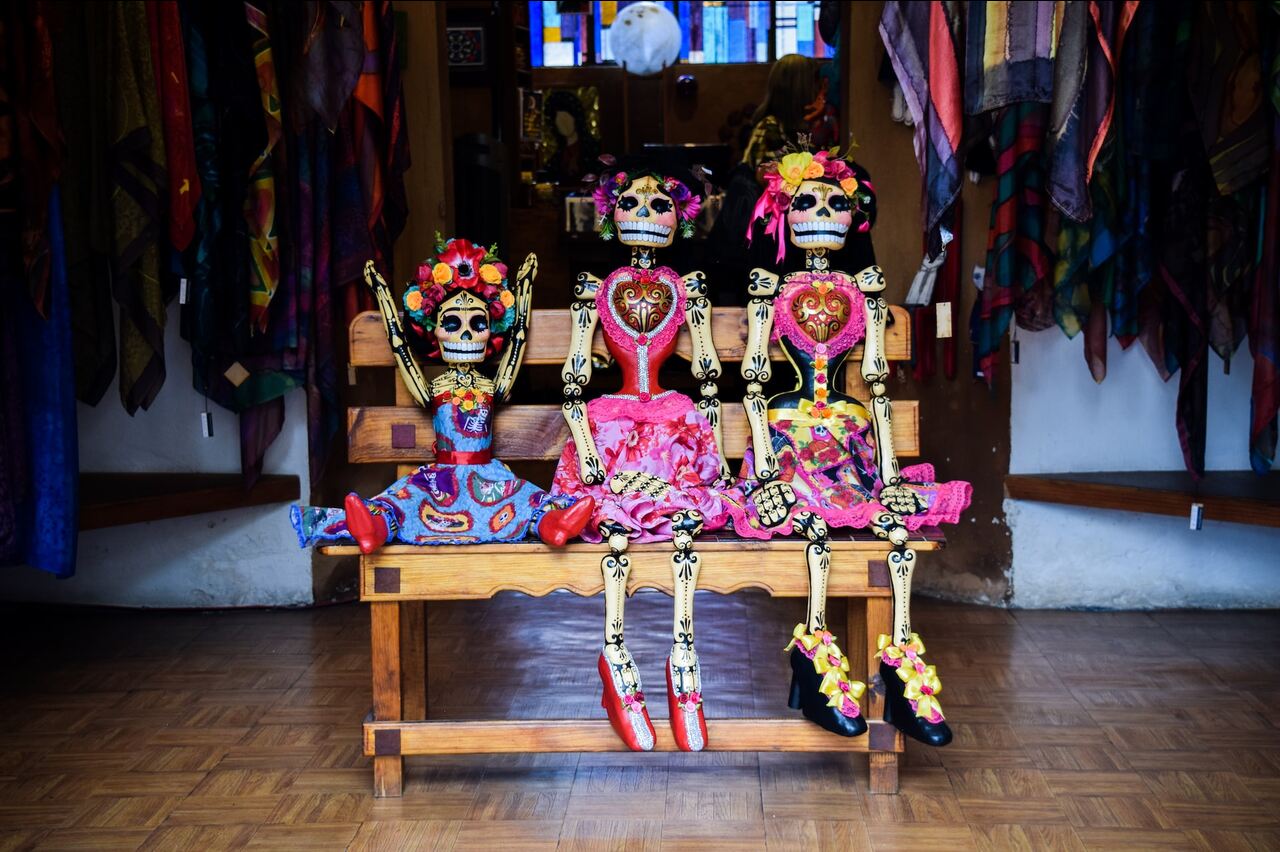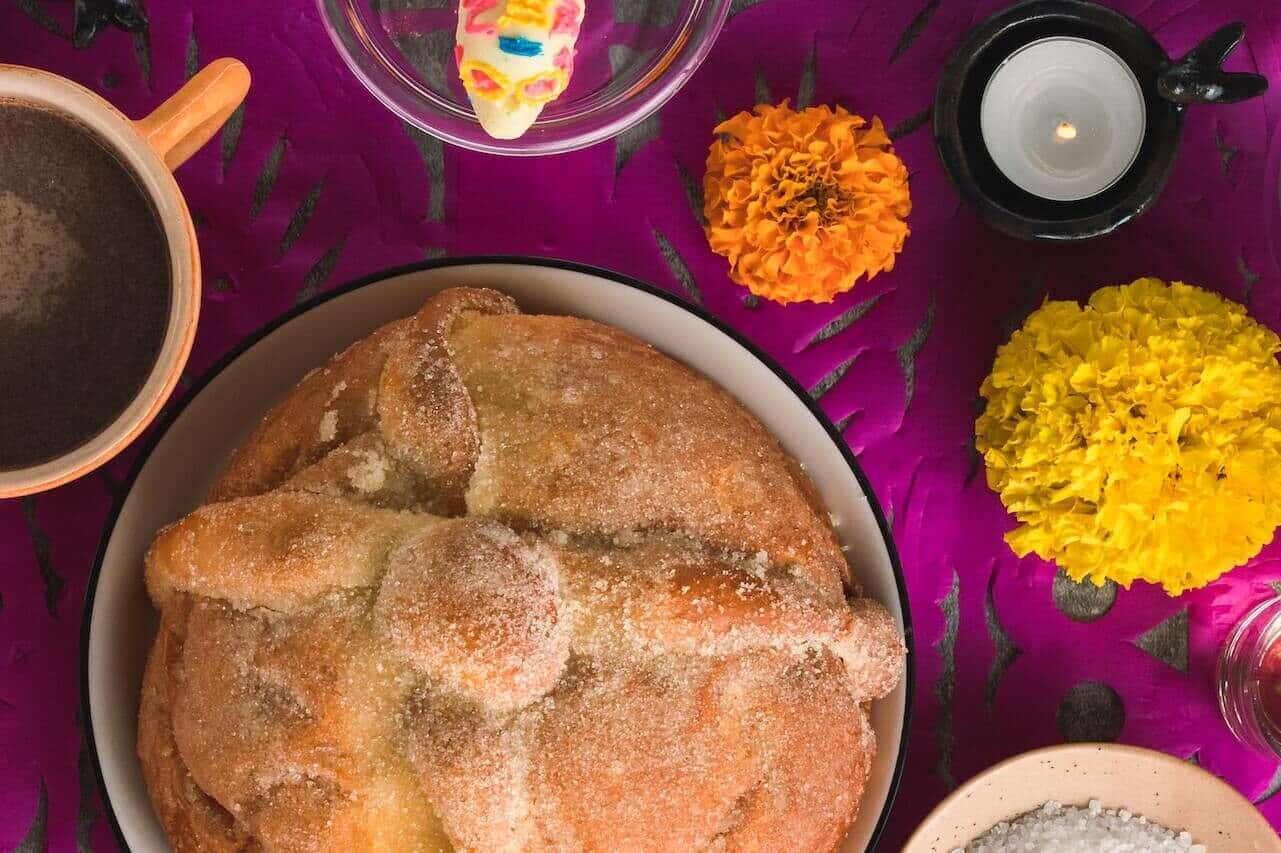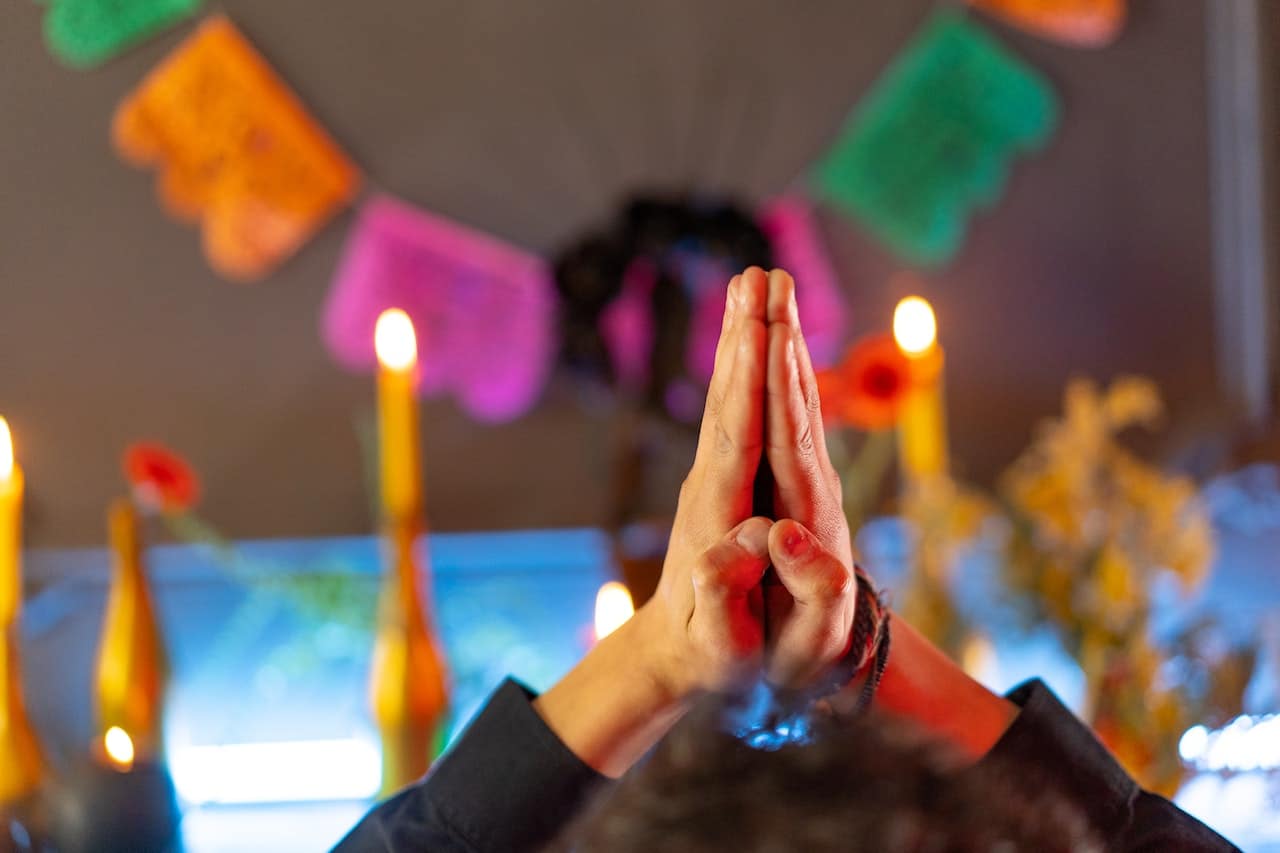
El Día de los Muertos: A Guide to Celebrating the Day of the Dead In Spanish
DATE:
Many of us have heard that the Day of the Dead in Spanish (El Día de los Muertos) is a traditional Mexican celebration, which has transcended borders and has become recognized, not only in Mexico but in other countries in Latin America and the world.
Unlike Halloween, this tradition generally celebrates the memory of deceased relatives or loved ones, through different rituals, prayers, or spiritual commemorations.
There is a great story behind the Day of the Dead in Spanish since Hispanic culture and Catholicism have had a great impact on this celebration, which is one day after the commemorated Día de Todos los Santos (All Saints Day), so there is an important religious connection.
However, the pre-Hispanic culture, as well as the Aztec or Mayan influence, is also important and even essential for the existence of this commemorative day in Mexico.
Check out some more of the Day of the Dead history.
History of the Day of the Dead
It is said that the Day of the Dead has its origin more than 3 thousand years ago, as it has been introduced in the culture and indigenous roots of the time in Aztec, Mayan, and Mesoamerican lands.
However, with the arrival of the Spanish conquest and the forced conversion to Catholicism by the colonizers, the beliefs of both communities have been mixed to date, taking traditions from both and merging until reaching what is known today as the Day of the Dead in Spanish, which involves different rituals, both pagan and religious.
DID YOU KNOW…?
In pre-Hispanic culture, when someone died, a cult was performed where the journey of the dead to hell (known in the Nahuatl language as Mictlán) was represented.
Day of the Dead in Spanish: list of traditions
Although it may not seem very appropriate, it is possible to compare this holiday with Women’s Day, Men’s Day, or Valentine’s Day, concerning the fact that a special celebration is held for the protagonists, which in this case are deceased family members. That is why there is a long list of traditions that Mexicans usually do on November 2nd of each year.
Here we leave you a small example of the activities of the Day of the Dead that you can do in Spanish and English, and thus learn more about this spectacular Mexican festivity:
- Visita a los muertos en el altar (Visit the dead at the family altar)
- Haz ofrendas a los muertos (Giving offerings to the dead)
- Pide dulces en las calles (Ask for sweets in the streets)
- Haz disfraces (Make costumes)
- Haz mexicráneos (Make “Mexican skulls”. The word “mexicráneo” is the combination between “skull” and “Mexican”)
- Haz esqueletos de papel (Make paper skeletons)
- Haz calaveritas literarias (Make literary skulls, a traditional Mexican composition)
- Come dulces del altar (Eat sweets from the altar)
- Canta en el altar de los muertos (Sing at the altar of the dead)

Día de los Muertos Vocabulary you should know
|
Spanish |
English |
|---|---|
|
Cultura prehispánica |
Pre Hispanic culture |
|
Poema |
Poem |
|
Esqueleto |
Skeleton |
|
Figurita |
Figurine |
|
Antepasado |
Ancestor |
|
Difunto |
Deceased |
|
Altar |
Altar |
|
Parranda |
Party |
|
Panteón |
Pantheon |
|
Cajón |
Coffin ** |
|
Paraíso |
Paradise |
|
Asustar |
Frighten |
|
Sepultar |
Bury |
The word cajón can mean many other things, not only a coffin, but also a drawer, crate, box, and bin.
Typical phrases in Spanish During Dead Celebrations
Something that you cannot leave aside if you are interested in learning more about the culture of the Latin American country during this dead celebration are the typical phrases Mexicans say before, during, and after the dead celebrations. Here are some examples with their respective meaning:
- Se lo llevó la huesuda. – The grim reaper took him away.
It means that a person died. It is also a particular saying that they say jokingly when someone disappears for a certain time.
- Antes muerta que sencilla. – She would rather be dead than look simple.
It means that usually a person does not care what situation they are in, but prefers to present a good physical image of him/herself. - No estaba muerto, andaba de parranda. – He was not dead, he was just out partying.
It refers to a person who disappears for a while without saying where he went away and comes back without problems. - Ya colgó los tenis. – He already hung up the tennis shoes.
It is a typical Latin American phrase associated with the fact that a person died. This phrase had its origin in the activity that was carried out in Mexican neighborhoods where the shoes of a person who had just died were hung on electrical cables. In another context, this phrase is also used to refer to people who end their professional careers, retire or even get married.
QUICK NOTE…
In general, many of these phrases are said in a family context or among trusted people, and these words could not be very well received depending on the situation. It is necessary to know the context to apply them correctly and avoid hurting susceptibilities.
Most of these phrases are typical sayings of Mexican culture and other South American countries, but they are widely used during the Day of the Dead festivities, since they mention death in different situations, comically or anecdotally. Here are other sayings associated with this celebration:
- El muerto al pozo y el vivo al gozo. – The dead man goes into the pit, and the living man goes to enjoy.
This saying implies that even if a person has died, their family and friends are still alive and will have to continue to take care of their survival and food. - Uno propone, Dios dispone, llega la muerte y todo lo descompone. – A man proposes, God disposes, death arrives and everything breaks down.
This saying tries to emphasize that death can come at any time, despite the plans that a person has prepared for his life. - Para morir, nacemos. – We were born to die.
This phrase is said by people who try to minimize the importance of something they are doing that can be dangerous to their health and physical integrity.
Traditional Food of this Dead Parade
We know that this is one of your favorite parts of posts like this. Food is always an important feature in every holiday that is celebrated in the world. Just as in America, you usually eat and give away roast turkey, mashed potatoes, cranberry sauce, apple pie, or gravy during Thanksgiving.
In Mexico, there are also many foods that you can eat shamelessly every November 2nd.

Check out the traditional meals of the “día de muertos” in Spanish and English below, so you can learn them all:
Calaveras de azúcar (Sugar skulls)
It is a delicious sweet in the shape of a skull. You can also use sugar skulls to decorate different places during the day of the dead. They are made of solid sugar and can be covered in chocolate.
Tamal (Tamale)
This food is not only typical in Mexico but also in other Central and South American countries. The tamale is a meal made of dough with different vegetables or meat, usually chicken. It is cooked and covered in banana or corn leaves.
Empanadas de calabaza (Pumpkin empanada)
Another ideal meal on the Day of the Dead. Empanadas are generally made with wheat or corn dough, but to celebrate the Day of the Dead, pumpkin is used as the main food.
Pan de muerto (Dead Bread)
This is one of the main meals on the Day of the Dead. The “pan de muerto” has a pre-Hispanic origin and is decorated with the characteristics of a skull in the shape of a cross. This bread can be found in any bakery in Mexico on this day.
Mole (Mole)
The mole is a gravy-like sauce made with many ingredients that can be added to chicken and other foods.
So that you know the meals of the día de muertos properly and so you can order what you want on your way through Mexico, we have made a table for you:
|
Meal |
Color |
Flavor |
Ingredients |
|---|---|---|---|
|
Calaveras de azúcar |
Blanco / White |
Dulce / Sweet |
Azucar, chocolate / Sugar, chocolate |
|
Tamal |
Amarillo / Yellow |
Salado / Salty |
Carne, pollo, cerdo, harina de maíz / Beef, chicken, pork, cornmeal |
|
Empanadas de calabaza |
Naranja opaco / Dull Yellow |
Variado / Varied |
Calabaza, carne, arroz / Pumpkin, meat, rice |
|
Pan de muerto |
Beige |
Dulce o salado / Sweet or salty |
Harina de trigo, ralladura de naranja, vainilla / Wheat flour, orange zest, vanilla |
|
Mole |
Marrón / Brown |
Picante / Spicy |
Chile / Chili peppers |
DID YOU KNOW…?
In each celebration of the day of the dead, each Mexican carries a yellow or orange flower named flor de muerto (flower for the dead) which is generally the Tagetes Erecta. This tradition is ancient and it is said that the Mexican community used to bring one of these flor de muerto to the grave of their dead loved one, to light their way back.

Traditional Prayer for Día de Muertos
The following is a prayer that Catholics or religious people usually profess in honor of their deceased during the Day of the Dead celebrations. You can learn it in Spanish and English:
Prayer in Spanish
“Dios de amor y misericordia, ponemos en tus dulces manos a nuestros hermanos y hermanas que has llamado de esta vida de pecado a tu presencia.
En la Tierra, les demostraste tu gran amor, y ahora que ya están libres de toda preocupación concédeles pasar con seguridad las puertas de la muerte y gozar de la luz y la paz eterna en el cielo, contigo.
Habiendo terminado su vida terrenal, te pedimos que los recibas en el paraíso, en donde ya no habrá tristeza ni dolor, sino solo alegría y felicidad con Jesús, tu Hijo, y con el Espíritu Santo, por siempre y para siempre.
Amén”
Prayer in English
“God of love and mercy, we place in your gentle hands our brothers and sisters whom you have called from this life of sin into your presence.
On Earth, you showed them your great love, and now that they are free from all worries, grant them to pass safely through the gates of death and enjoy the light and eternal peace in heaven, with you.
Having finished their earthly life, we ask you to receive them in paradise, where there will no longer be sadness or pain, but only joy and happiness with Jesus, your Son, and with the Holy Spirit, forever and ever.
Amen”
Wrapping up
The Day of the Dead has traditions, sayings, typical foods and a fascinating story to be told in all languages. However, getting to know this festivity from the idiosyncrasy of the Spanish language is even more wonderful, since you delve into history and can experience it differently.
Now you have known many words about this Mexican holiday and we hope that you can visit Mexico during this date and see firsthand what it means to live a day of the dead to the fullest. You can learn much more vocabulary in Spanish with SpanishVIP and even have a 1:1 free class or be in our 7-day trial for group classes, and thus improve your Spanish incredibly.
All the best!











